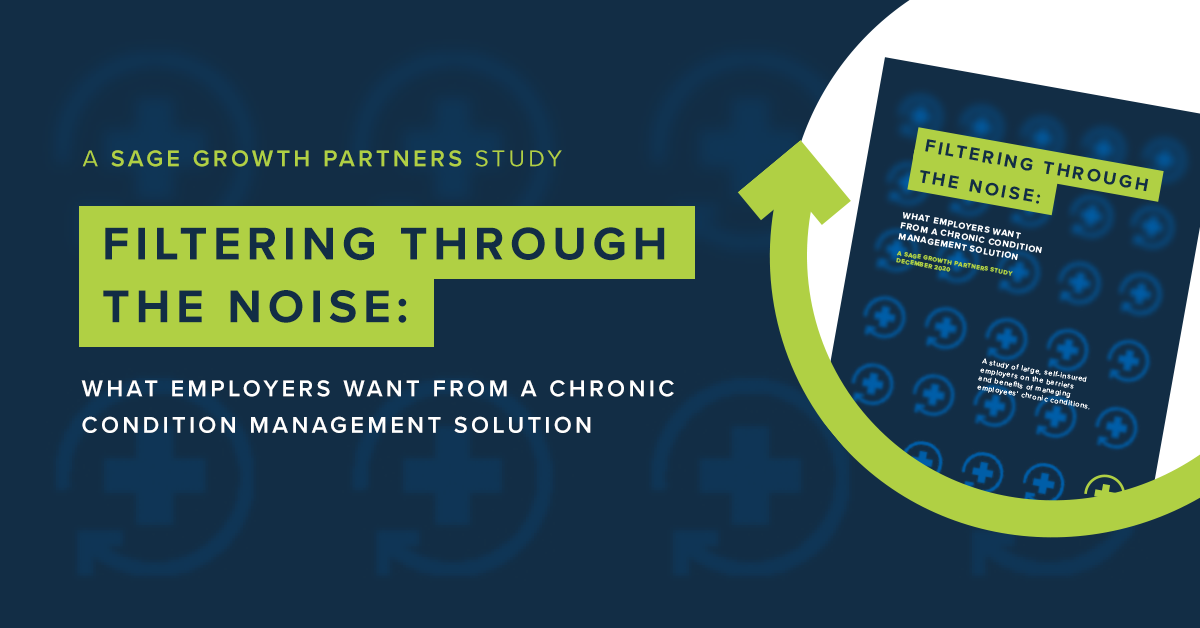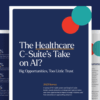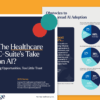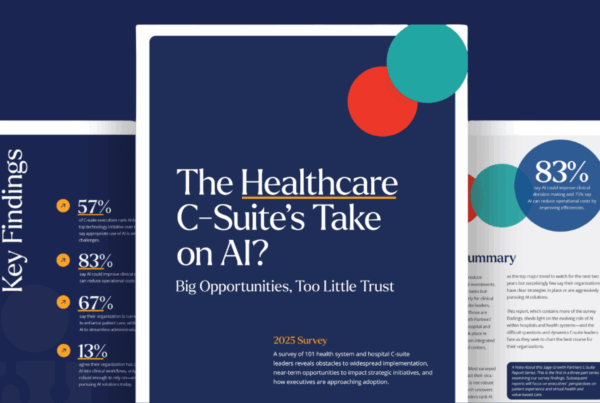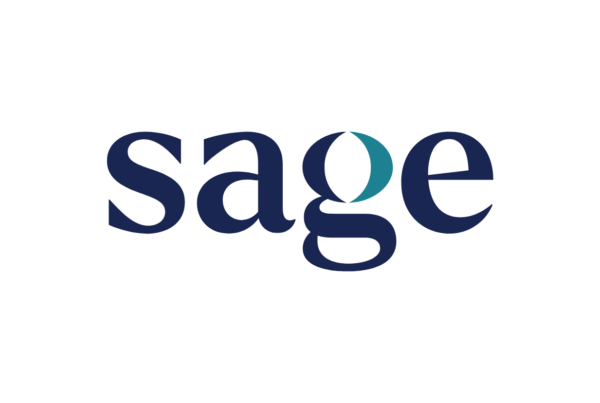A new survey reveals the importance of digital solutions to manage employees’ medical and pharmacy spend, and barriers to adopting them
Baltimore, MD – Jan. 21, 2021 – Ninety percent of America’s $3.5 trillion annual healthcare costs are spent on people with chronic physical and mental health conditions.[1] Meanwhile, five of the most common conditions and risk factors—high blood pressure, diabetes, physical inactivity, obesity, and smoking—directly cost U.S. employers more than $36 million in lost annual productivity.[2] To explore how large self-insured employers are managing these costs, Sage Growth Partners (SGP), a Baltimore-based healthcare research, strategy, and marketing firm, today announced the publication of a new market research report, Filtering through the Noise: What Employers Want from a Chronic Condition Management Solution. Based on a survey of more than 200 large, self-insured employers, the report assesses the barriers and benefits of managing employees’ chronic conditions.
Key findings from the report include:
Digital health solutions are gaining popularity to manage increasing medical and pharmacy costs
- More than two thirds of large, self-insured employers offer employees chronic condition management solutions; digital (68%) and non-digital (67%) solutions are used about equally.
- Almost three-quarters (72%) of employers consider it very or extremely important to offer digital solutions like Omada, Livongo, and others, to help employees manage their own health.
- The top reasons to offer a digital solution are the ability to control medical and pharmacy spend (61% and 53% consider these very important) and to promote employee wellness and satisfaction (54% and 50% consider these very important).
Behavioral health rivals traditional chronic conditions for mindshare
- While diabetes, obesity, and heart disease continue to be top health concerns for self-insured employers, mental and behavioral health is close behind, with 75% of employers saying it is a priority.
- The pandemic has exacerbated mental health and stress; more than half of U.S. adults (53%) say their mental health had deteriorated due to COVID-related worry and stress.[3]
- The longer the pandemic persists, the more likely that behavioral health issues will rise in importance.
Low employee adoption, single disease solutions, and a lack of ROI challenge digital health vendors
- Almost half (47%) of respondents say low employee engagement is a key barrier to addressing health conditions with digital solutions.
- Nearly three quarters (71%) would prefer a single vendor that can address multiple chronic conditions—but only one in five (21%) are aware of a vendor that can do this.
- Two in five (40%) believe employees won’t engage with multiple vendors, preferring a single digital solution.
- Lack of budget is cited as a barrier by 36% of respondents, indicating the importance of vendors’ ability to prove return on investment.
“The ability to remotely manage chronic conditions has become increasingly important during the COVID-19 pandemic,” said Stephanie Kovalick, SGP’s chief strategy officer. “Like telehealth and other remote care solutions that have gained traction out of necessity this year, these modalities are here to stay. Though employees currently rely equally on digital and in-person solutions for chronic care management, we expect to see a shift in 2021, as consumer demand for digital tools—and the control and flexibility they provide—increases. Vendors will need to be attuned to employers’ top priorities; it’s clear that the ability to show ROI and effectively engage employees are key areas that will lead to success.”
###
Media Resources
- Download the full report, Filtering through the Noise: What Employers Want from a Chronic Condition Management Solution, for a deeper look at the findings.
- To arrange an interview with SGP leadership to discuss the report in more detail, please contact Boh Hatter at bhatter@sage-growth.com, or by calling and leaving a message at 410-534-1161.
Methodology
Sage Growth Partners interviewed 12 industry leaders and conducted a quantitative survey that received 230 responses in the summer of 2020. Over half of respondents (58%) were from companies with more than 4,000 employees, while the remainder had 1,001 to 4,000 employees. All respondents represented benefits administration within the finance and human resources functions.
[1] https://www.cdc.gov/chronicdisease/about/costs/index.htm#ref1
[2] https://www.cdc.gov/chronicdisease/resources/publications/factsheets/workplace-health.htm
[3] https://www.kff.org/coronavirus-covid-19/report/kff-health-tracking-poll-july-2020/
